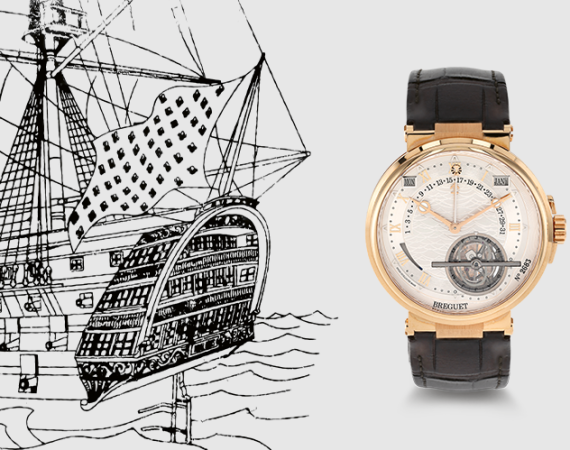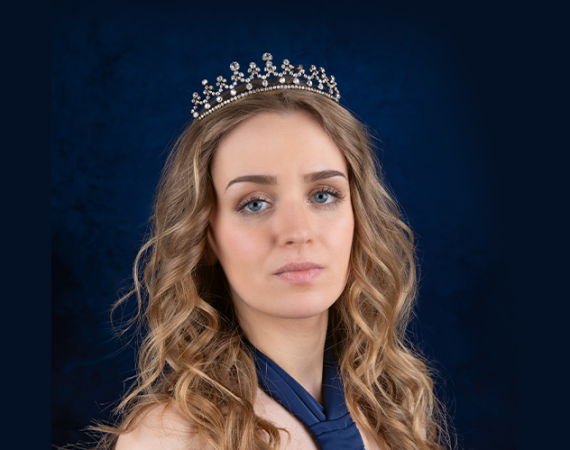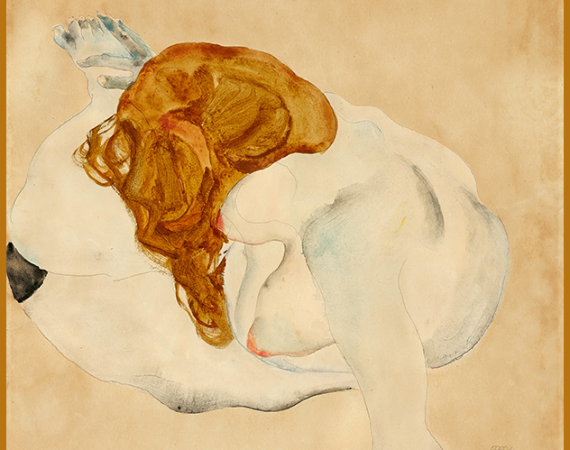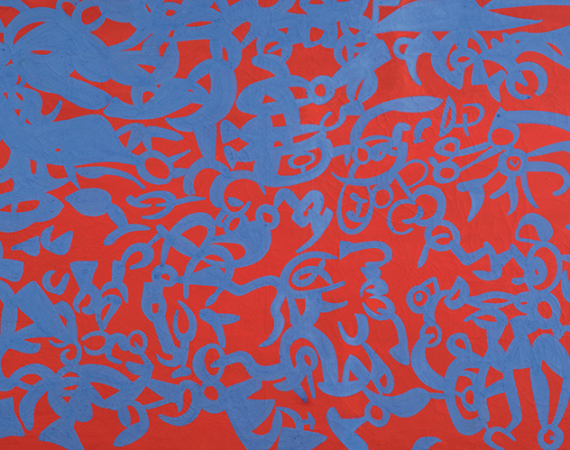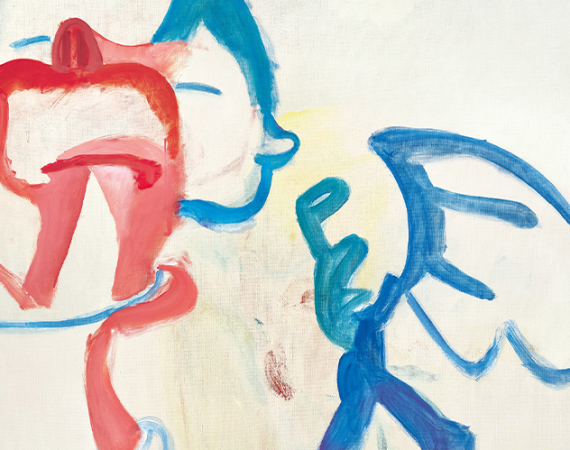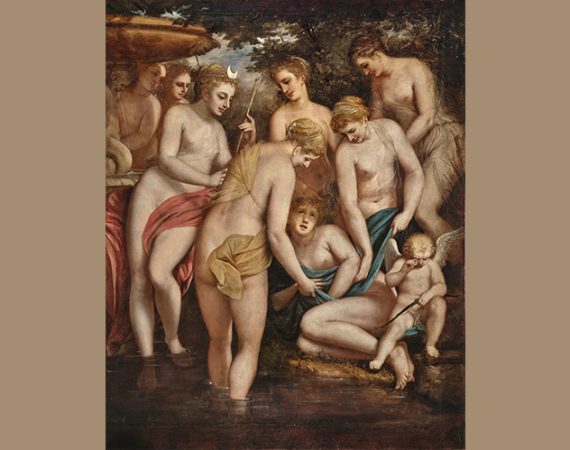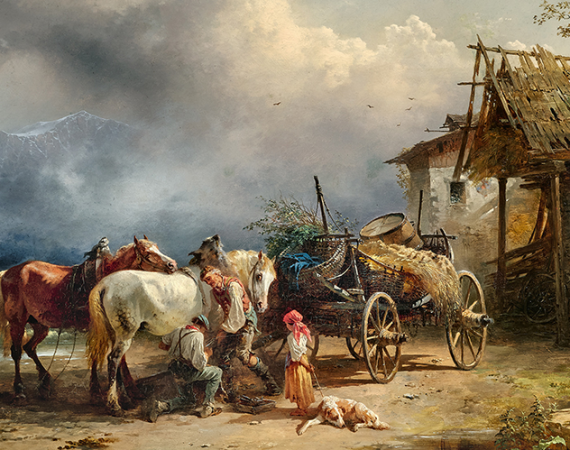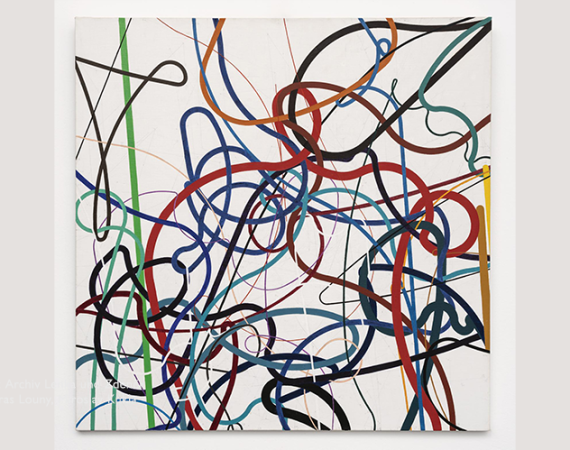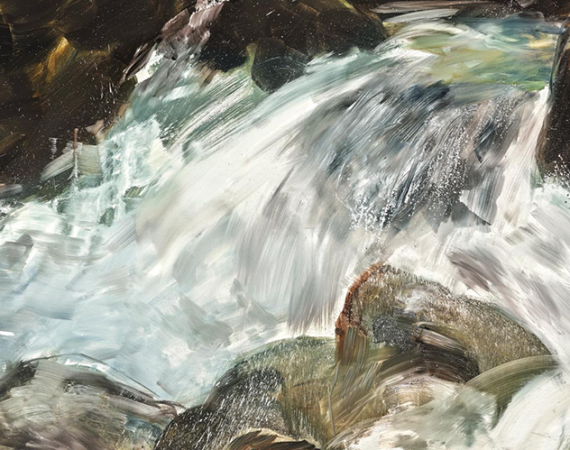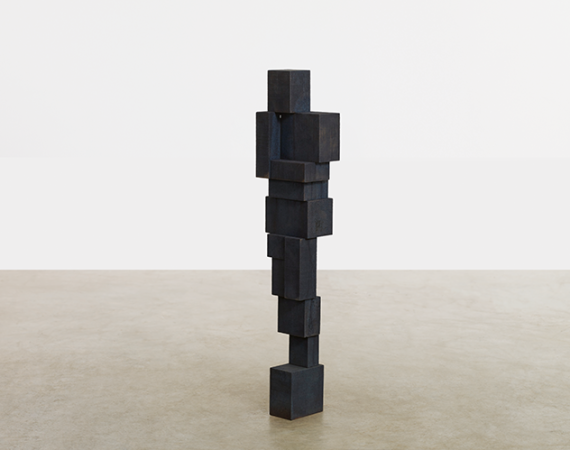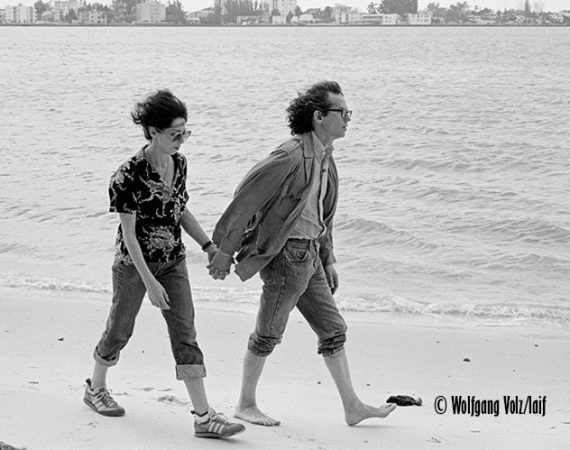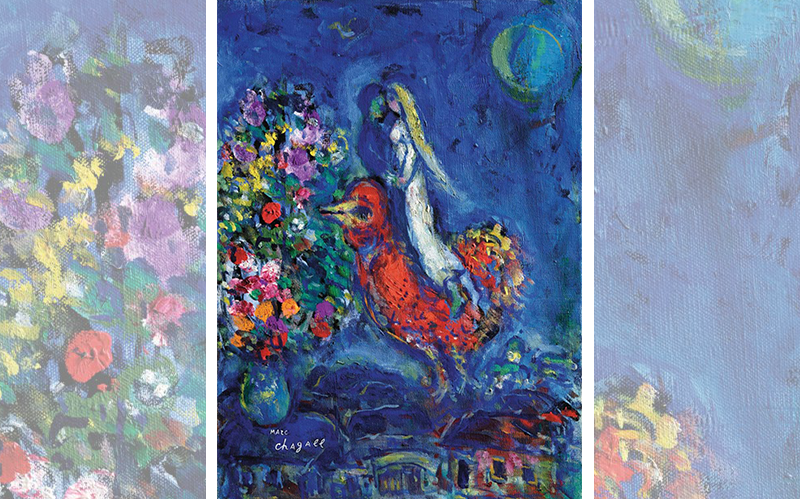
Two lovers, a red cockerel, and a deep blue sky: Chagall’s painting from the 1970s celebrates love as the luminous power of memory.
Children who love each other are there for no-one, they are elsewhere, far beyond the night, far above the day, in the dazzling light of their first love.“ Prévert’s verses seem written to guide us through Marc Chagall’s dreamlike universe: a realm where love becomes vertigo and memory transforms into a fairy tale of colour and light. In this painting, executed in the second half of the 1970s, two lovers float in an ultramarine sky: a blue that is not merely colour, but a substance capable of evoking the intensity of Yves Klein’s monochromes and the sacred glow of Giotto’s lapis lazuli in the Scrovegni Chapel. Here, colour does not define space: it inhabits it, transforms it, and suspends it in an ‘elsewhere’, where dream and memory converge. At the center of the composition, a red cockerel vigorously commands the painting. Its vibrant hue recalls the chromatic experiments of the Fauves – Matisse and Derain – but in Chagall’s hands it becomes a symbol of vitality, desire, and renewal, a bridge between the tangible world and the spiritual. On the left, flowers cascade like fragile offerings, small gifts suspended between everyday life and poetry. The city in the background, with its slightly tilted houses and familiar rooftops, is not merely a backdrop: it is probably the artist’s hometown Vitebsk, which resurfaces as a visual and emotional memory in many of his works. Every roof, chimney, and street narrates the past, transforming it into colour and form, revealing how place and feeling are deeply intertwined and how painting can preserve memory, roots, and affection. The theme of the lovers – perhaps Chagall himself with his beloved Bella – returns as a leitmotif throughout his work. In the suspended bodies, one senses an almost sacred lightness, reminiscent of Matisse’s dancers and that spiritual elevation that lifts the human toward the divine. Their embraces float like notes in the air, between sky and earth, dream and reality, weaving an invisible thread that transfigures the world, imbuing it with meaning and light.
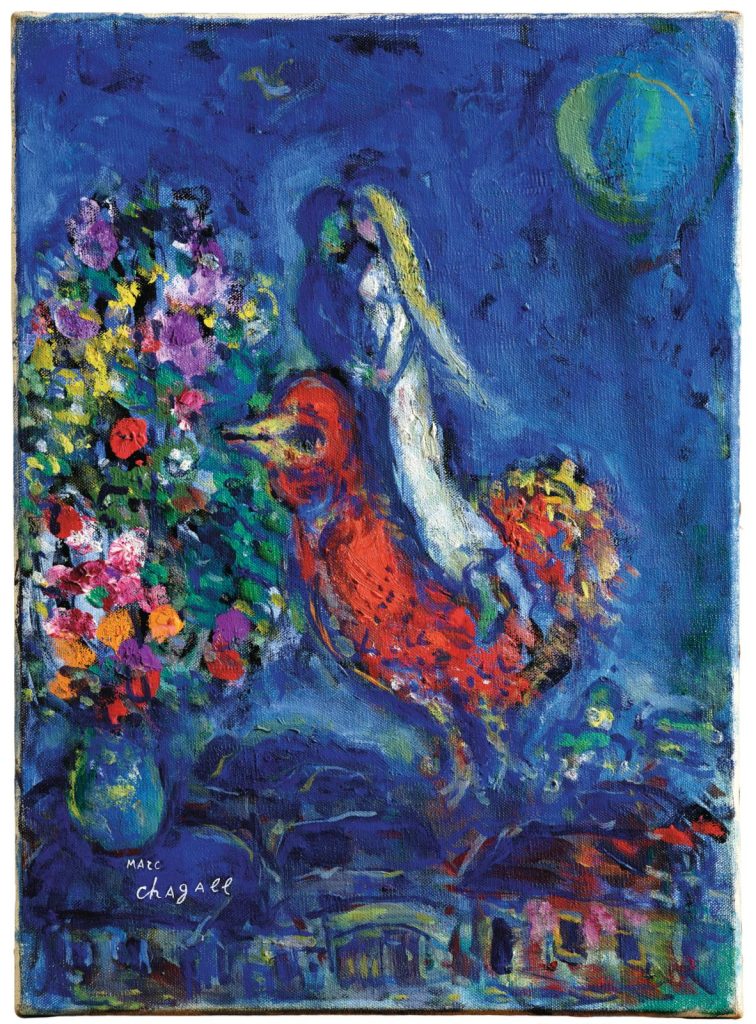
AUCTION
Modern Art, 18 November, 6 pm
Palais Dorotheum, Dorotheergasse 17, 1010 Wien
20c.paintings@dorotheum.at
Tel. +43-1-515 60-358, 386

